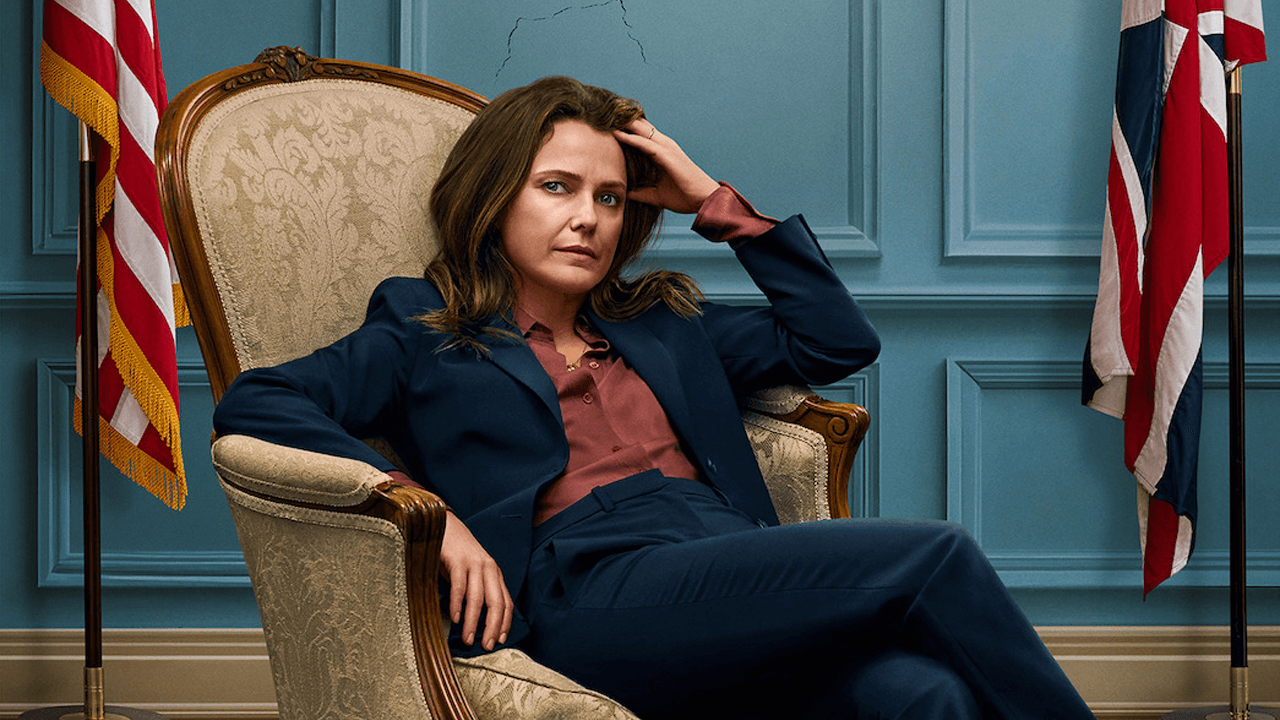Netflix’s The Diplomat provides an in-depth peek into the world of diplomacy, maintaining unions and also about stepwise power roll in different structures. Relationships are the standard links of thread between people, communities or groups across borders and require regular efforts, to nurture, regular conflict management and also the tug of war when it comes to balancing power.
In The Diplomat, we witness several trials and tribulations of Kate Wyler played by Keri Russel who is the newly appointed United States ambassador to the United Kingdom. She was unwillingly forced into a conflict situation being expected to navigate the crisis with limited resources.
In the first episode, she leaves for a different country with a whole different job role, something which the character strongly resented. She explored different plots and it is identified in the beginning itself which Kate evokes on her first journey. Meanwhile, she also strives to maintain her turbulent marriage to fellow diplomat Hal Wyler (portrayed by Rufus Sewell) amidst the shifting dynamics. Throughout the eight episodes, Kate’s journey enlightens us about the complexity of personal relationships, revealing that there is often more than meets the eye.
Simultaneously, The Diplomat explores the multifaceted nature of international relations. Kate’s character was messy, dignified, funny, popular, an eye-catcher and also the torch-bearer of a lot of political decisions in the US.
The Diplomat brings a lot of curiosity to the plate with its build-ups in the beginning however the best effort doesn’t lead up to being close to any political drama. Interestingly, though with its small fringe of spotless effort, the series successfully touches on the issue of misogyny and patriarchy leading to impacting the decision-making of women.
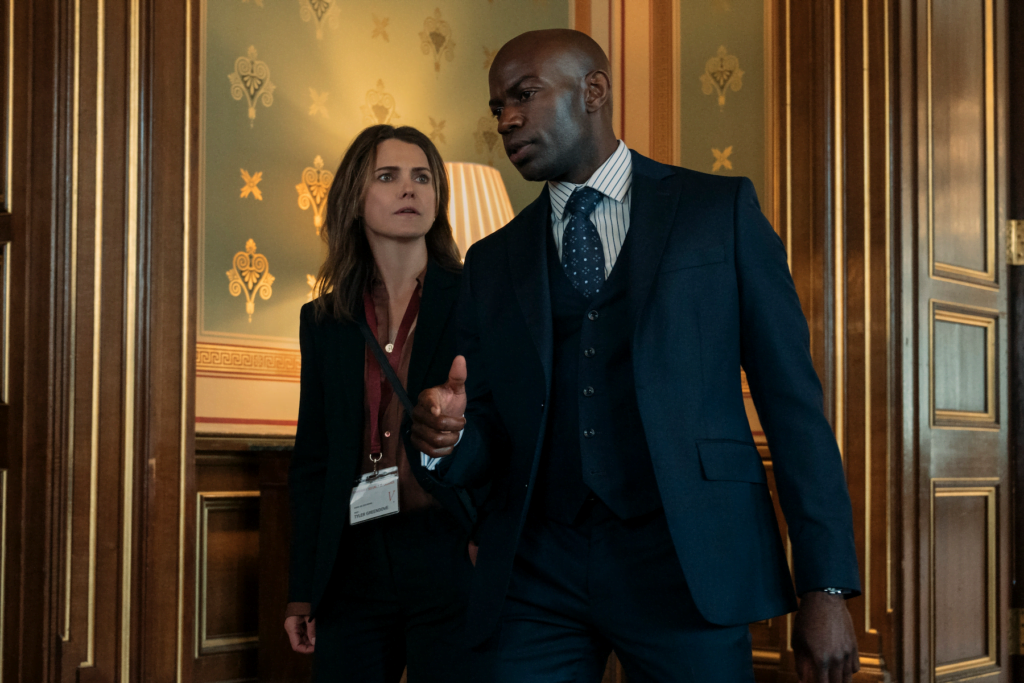
In the second episode, when she visits the Prime Minister he does not miss to mention the gender of the Ambassador, adding to the fact that the last time that happened was 50 years ago. This reflects the institution’s failure to find one individual in the last 50 years eligible for the same position.
One of the most compelling aspects of The Diplomat lies in the undeniable pleasure of witnessing the remarkable talents of Keri Russell and Rufus Sewell as they engage in passionate arguments and flirtations and challenge each other with electrifying chemistry, bolstered by their believable backstories.
The captivating dynamic between Russell and Sewell, coupled with the intriguing interplay of personal and political struggles, forms the core of the series, making it a compelling watch for audiences.
Russell, known for her role in The Americans, and Sewell, acclaimed for his performance in Dark City, portray a formidable couple thrust into world-altering events following a missile attack on a British carrier in the Persian Gulf. The origins of the attack remain uncertain—was it the work of Iran, Russia, or another nation? Russell assumes the role of Kate Wyler, the newly appointed U.S. Ambassador to the United Kingdom, sent there to ensure the alignment of the hawkish U.K. Prime Minister’s (played by Rory Kinnear) plans with the interests of the United States.
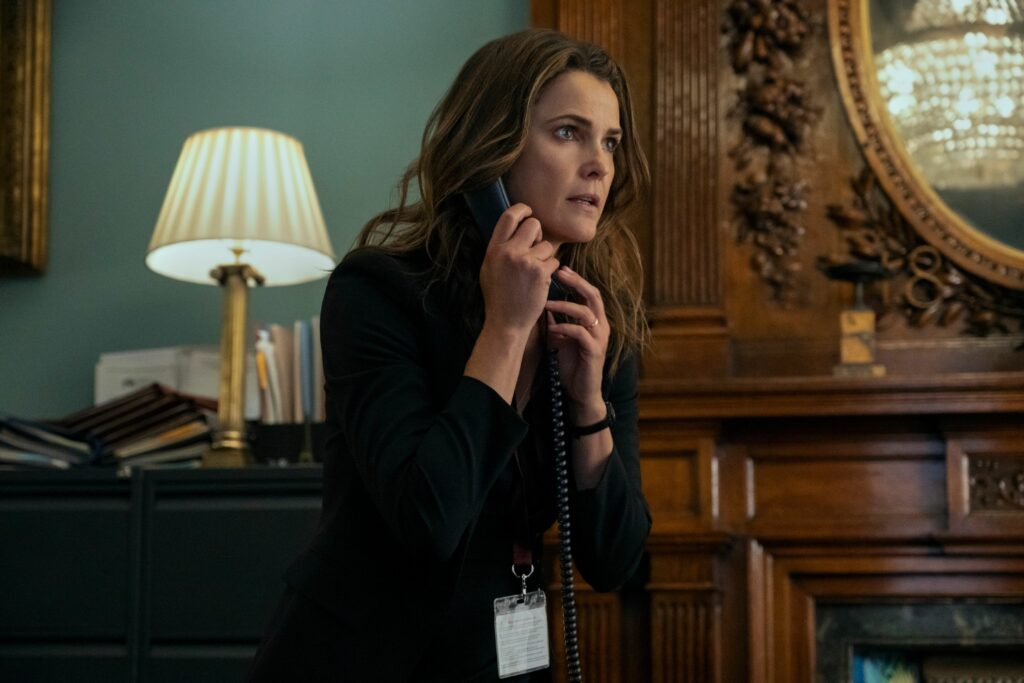
Simultaneously, Kate finds herself on a shortlist for a potential position in the Vice President’s office, which renders her troubled husband Hal (Sewell) both a liability and an asset. Hal, a political strategist and adept manipulator, operates off the grid, engaging in manoeuvres that could potentially jeopardise Kate’s chances.
The captivating dynamic between Russell and Sewell, coupled with the intriguing interplay of personal and political struggles, forms the core of The Diplomat, making it a compelling watch for audiences.
The Diplomat is no different from any other American-made series
The Diplomat seems no different from any other American-made film or series which actively focuses on using middle eastern wars as bait for them addressing international conflicts. This approach perpetuates the narrative of anonymous victims and serves primarily to deepen and develop the invading forces.
The presentation of Kate and another character to show their concerns and the uninvited urge to invade being a saviour has been a common threat it continued like most of the American drama. The show’s effort to touch upon several issues comes out in handy during the whole discourse but at the same time, the action of following up with the reflection is frequently missed out.
Additionally, Rory Kinnear’s character, the Prime Minister, follows a familiar pattern seen in his previous roles, where his characters are often portrayed negatively. His typecasting signals his character’s lack of genuine concern for his country’s best interests. The revelation of his involvement in attacking the aircraft carrier and potentially orchestrating the death of Hal and one of Kate’s advisers feel somewhat anticlimactic due to the predictable nature of Kinnear’s characters.
The Diplomat seems no different from any other American-made film or series which actively focuses on using middle eastern wars as bait for them addressing international conflicts. This approach perpetuates the narrative of anonymous victims and serves primarily to deepen and develop the invading forces.
The show also shares similarities with other series and films in its portrayal of international adversaries targeting Western service members, culminating in a reveal of betrayal from within the government. This approach, which paints the rest of the world as universally bad and the government official as the lone villain, has become stagnant and fails to bring anything new to the conversation.
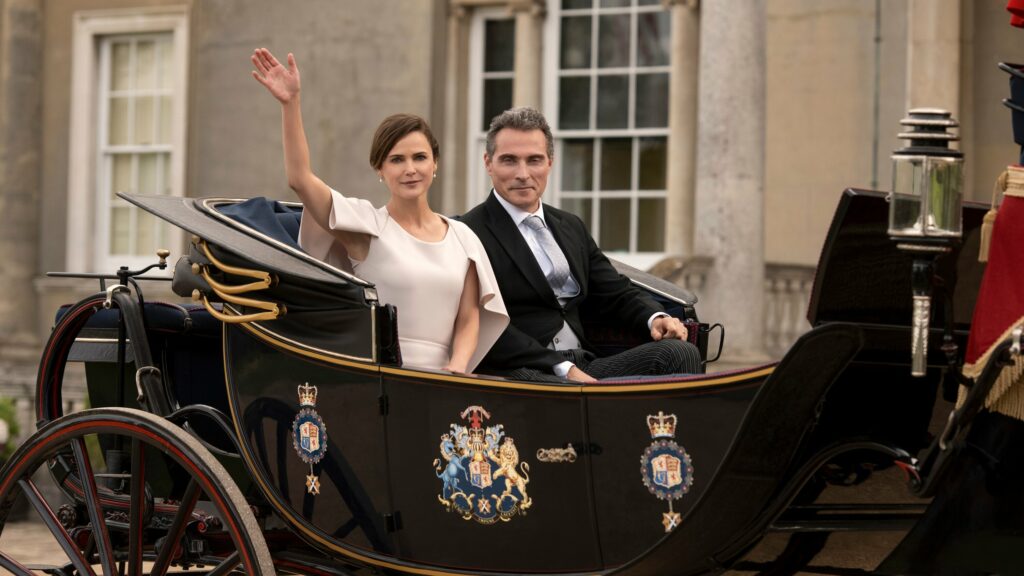
In essence, The Diplomat, despite its claims and intentions, treads familiar ground and falls into tropes and patterns that have been seen before, limiting its ability to offer a fresh perspective on the subject matter.
Interestingly, Rory Kinnear’s character as the prime minister follows a similar pattern as observed in his previous roles. His portrayal was sublimely mirrored as a lack of effort to address genuine concern for the country’s best interest. The revelation of his involvement in attacking their aircraft carrier and also the probable orchestrator of Hal’s death seemed very predictable in the plot.
Kate, the main character faces the hurricane of misogynism
When Kate reflects and sees the undermining misogynist behaviours of every character working close to her, the lack of effort from her end also reflects the usual behaviour of a power institutionally resisted in history even if structurally liberated in the present.
The Diplomat presents Kate and her colleagues in the CIA as defensive about their involvement in the wars, believing in the falsehoods surrounding Iraqi weapons of mass destruction and failing to evacuate all their Afghan allies before the U.S. withdrawal. However, they continue working for the American government, holding onto their belief in America’s ideals.
Kate laments missing calls from an Afghan woman she worked with, now trapped under Taliban rule. However, instead of taking action to help her, the focus remains on Kate’s reflections. The speeches in the series fail to turn into any legitimate actions.
The show touches on themes reminiscent of Debora Cahn’s work on The West Wing. While the characters express contrition, the series lacks the inclusion of Middle Eastern characters directly impacted by the post-9/11 wars.
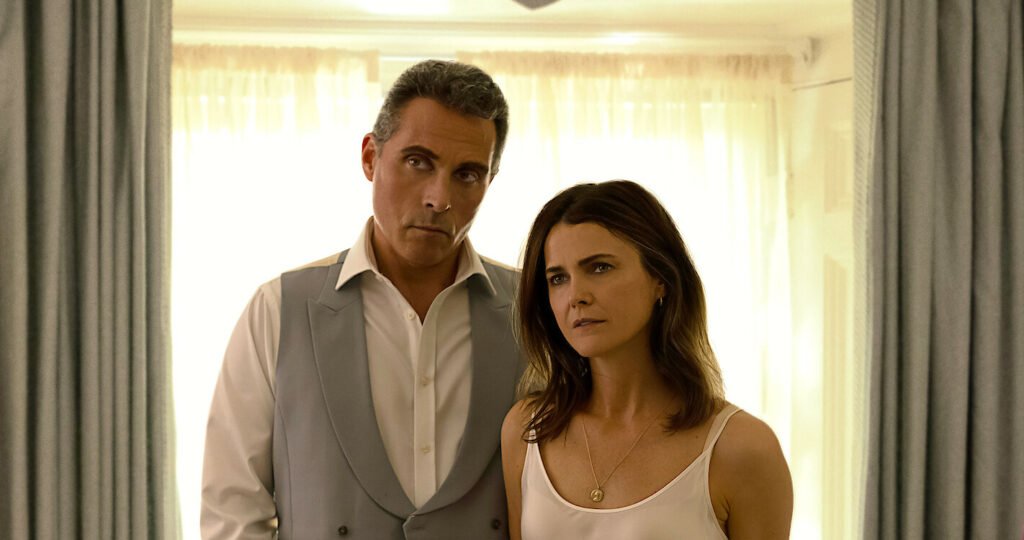
In one scene, Kate laments missing calls from an Afghan woman she worked with, now trapped under Taliban rule. However, instead of taking action to help her, the focus remains on Kate’s reflections. The speeches in the series fail to turn into any legitimate actions.
The show’s portrayal of the Middle East as a place constantly needing the arms of America for survival claims most of the critique creating a dubious sense of hypocrisy. The Diplomat is a combination of several passionate speeches, resonating experiences of gender disparity while invading any space, be it the white house or Parliament.
Trying to touch on several social concerns and failing in justifying
Trying to touch on several social concerns and doing no justice to any has been frequent in the series of 8 episodes.
Kate is depicted as intelligent and sharp in her political acumen, excelling in her role as an ambassador. However, her character is also shown as dismissive of manners, fashion, and office niceties, perpetuating the stereotype of a Strong Female Character.
Additionally, Rory Kinnear’s character, the prime minister, follows a familiar pattern seen in his previous roles, where his characters are often portrayed negatively. His typecasting signals his character’s lack of genuine concern for his country’s best interests including his xenophobic, racist and sexist comments making him get nothing but a low carbs brownie. The revelation of his involvement in attacking the aircraft carrier and potentially orchestrating the death of Hal and one of Kate’s advisers feel somewhat anticlimactic due to the predictable nature of Kinnear’s characters.
The Diplomat also shares similarities with other series and films in its portrayal of international adversaries targeting Western service members, culminating in a reveal of betrayal from within the government. This approach, which paints the rest of the world as universally bad and the government official as the lone villain, has become stagnant and fails to bring anything new to the conversation.

The breakdown of Kate’s character can be explained as a positive portrayal of a woman who is well aware of her actions and who resonates strongly with her values.
Coordinating with the same values, the series choose a safer and similar pathway to liberate the character of women. Though, the question stays why is that a woman has to hate dressing up to be a good leader? (They can love the camera and run the country.)
Most of these portrayals come at a hard case of reflecting the woman’s character to be messy, depressed or either struggling to balance the family.
Sexism and gender discrimination exist in every layer of a social construct, it is impossible to divide the world largely entangled with this concern.
About the author(s)
Ritwik is a northeastern Bahujan who has been a journalist for 2 years. He has also been a UN fellow for the year 2021-22. He has worked on several papers like writing about reportage in broadcast media on women impacted by floods in the northeast. He is currently working on queer representation in the regional press of Assam. Most of the work focused on gender, sexuality, intersectionality, climate change, marginalised and vulnerable communities and data journalism.
He has been a contributing writer at Youth ki Awaaz, Feminism in India and Swaddle for the last 4 years.
